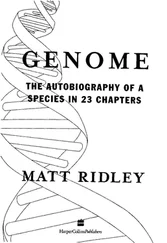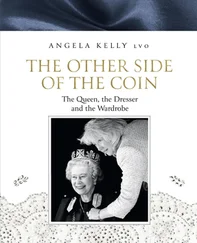The Queen - Matt Ridley
Здесь есть возможность читать онлайн «The Queen - Matt Ridley» весь текст электронной книги совершенно бесплатно (целиком полную версию без сокращений). В некоторых случаях можно слушать аудио, скачать через торрент в формате fb2 и присутствует краткое содержание. Жанр: Старинная литература, на английском языке. Описание произведения, (предисловие) а так же отзывы посетителей доступны на портале библиотеки ЛибКат.
- Название:Matt Ridley
- Автор:
- Жанр:
- Год:неизвестен
- ISBN:нет данных
- Рейтинг книги:4 / 5. Голосов: 1
-
Избранное:Добавить в избранное
- Отзывы:
-
Ваша оценка:
- 80
- 1
- 2
- 3
- 4
- 5
Matt Ridley: краткое содержание, описание и аннотация
Предлагаем к чтению аннотацию, описание, краткое содержание или предисловие (зависит от того, что написал сам автор книги «Matt Ridley»). Если вы не нашли необходимую информацию о книге — напишите в комментариях, мы постараемся отыскать её.
Matt Ridley — читать онлайн бесплатно полную книгу (весь текст) целиком
Ниже представлен текст книги, разбитый по страницам. Система сохранения места последней прочитанной страницы, позволяет с удобством читать онлайн бесплатно книгу «Matt Ridley», без необходимости каждый раз заново искать на чём Вы остановились. Поставьте закладку, и сможете в любой момент перейти на страницу, на которой закончили чтение.
Интервал:
Закладка:
THE PEACOCK ' S TALE
::: 149:::
The most telling argument against it was that the sons would inherit the handicap as well as the good genes, so they would be encumbered to the same degree as they were endowed. They would be no better off than if they were unencumbered and unsexy."
In recent years, however, Zahavi has been vindicated. Mathematical models proved that he might be right and his critics wrong." His vindicators have added to his theory two subtleties that lend it special relevance to the Good-gene theory of sexual selection. The first is that handicaps might (perhaps must) not only affect survival and reflect quality but also do so in a graduated way; the weaker the male, the harder it would be to produce or maintain a tail of a given length. And indeed, experiments on swallows have shown that birds promoted above their station, by being given longer tail streamers than they grew naturally, could not the next time grow as long a tail as before; carrying the extra handicap had taken its toll: 39 The second is that the handicapping ornament might be designed so as best to reveal deficiency: After all, life would be a lot easier for swans if they were not white, as anybody who has tried swimming in a lake in a wedding dress would know.
Swans do not become white until they are a few years old and ready to breed; perhaps being whiter than white proves to a skeptical swan that its suitor can spare the time from feeding to clean his plumage.
The vindication of Zahavi played a critical role in reignit-ing the debate between Fishererians and Good-geners. Until that happened, Good-gene theories could work only if the ornaments they resulted in were not encumbrances to the males: Thus, a male might advertise the quality of his genes, but to do so at a high cost to himself would be counterproductive unless there were a sexy-son effect.
LOUSY MALES
The handicap theory now comes face-to-face with the central conundrum of sexual selection: This is the lek paradox: that peahens are constantly skimming off the cream of the genetic cream by
::: 150 :::
The Red Queen
choosing only the very few best males to mate with, and as a result, within a very few generations, no variety is left to choose from: The good-gene assertion that mutations are likely to make ornaments and displays less effective provides a partial answer, but it is not a persuasive one: After all, it argues only for not choosing the worst rather than for choosing the best:
Only the Red Queen can solve our dilemma. What sexual selection theory seems to have concluded is that females are constantly running (by being so selective) but are staying in the same place (having no variety to select from). When we find that, we should be on the lookout for some ever-changing enemy, some arms-race rival. It is here that we meet Bill Hamilton again: We last encountered him when discussing the idea that sex itself is an essential part of the battle against disease. If the main purpose of sex is to grant your descendants immunity from parasites, then it follows directly that it makes sense to seek a mate with parasite-resistance genes: AIDS has reminded us all too forcibly of the value of choosing a healthy sexual partner, but similar logic applies to all diseases and parasites: In 1982, Hamilton and a colleague, Marlene Zuk (now at the University of California at Riverside), suggested that parasites might hold the key to the lek paradox and to gaudy colors and peacocks ' tails, for parasites and their hosts are continually changing their genetic locks and keys to outwit each other. The more common a particular strain of host is in one generation, the more common the strain of parasite is that can overcome its defenses in the next. And vice versa: Whatever strain of host is most resistant to the prevalent strain of parasite will itself be the prevalent strain of host in the next generation. Thus, the most disease resistant male might often turn out to be the descendant of the least resistant one in a previous generation: The lek paradox is thus solved at a stroke: By choosing the healthiest male in each generation, females will be picking a different set of genes each time and never run out of genetic variety to select from.'°
The Hamilton-Zuk parasite theory was bold enough, but
*
the two scientists did not stop there. They looked up the data for 1 09 species of bird and found that the most brightly colored
'
THE PEA0OCK S TALE
::: 151 :::
species were also the ones most troubled by blood parasites. That claim has been challenged and much debated, but it seems to hold up: Zuk found the same in a survey of 526 tropical birds, and others found it to be true of birds of paradise and some species of freshwater fish"—the more parasites, the showier the species. Even among human beings, the more polygamous a society, the greater its parasite burden, though it is not clear if this means anything."Z
And these might be no more than suggestive coincidences; correlation does not imply cause. Three kinds of evidence are needed to turn their conjecture into a fact: first, that there are regular genetic cycles in hosts and parasites; second, that ornaments are especially good at demonstrating freedom from parasites; third, that females choose the most resistant males for that reason rather than the males just happening to be the most resistant.
The evidence has been pouring in since Hamilton and Zuk first published their theory: Some of it supports them, some does not. None quite meets all the criteria set forth above. Just as the theory predicts that the more flamboyant species should be the ones most troubled by parasites, so it predicts that within a species the more flamboyant a male 's ornament, the lower his parasite burden.
This proves to be true in diverse cases; it is also true that females generally favor males with fewer parasites. This holds for sage grouse, bowerbirds, frogs, guppies, even crickets:" In swallows, females prefer males with longer tails; those males have fewer lice, and their offspring inherit louse resistance even when reared by foster swallow parents." Something similar is suspected in pheasants and jungle fowl (the wild species to which domestic chickens belong)." Yet these are deeply unshocking results. It would have been far more surprising to find females being seduced by sick, scrawny males than to find them succumbing to the charms of the healthiest. After all, they might be avoiding a sick male for no better reason than that they do not wish to catch his bug."°
Experiments done on sage grouse have begun to satisfy some of the skeptics. Mark Boyce and his colleagues at the University of Wyoming found that male grouse sick with malaria do poorly, and so do males covered with lice. They noticed, too, that the
::: 152 :::
The Red Queen
lice were easy to notice because they left spots on the males ' inflat-ed air sacs. By painting such spots on a healthy male 's sac, Boyce and his colleagues were able to reduce his mating success." If they could go on to show cycles from one resistance gene to another mediated by female choice, they would have given the Good-gene theory a significant boost.
THE SYMMETRY OF BEAUTY
In 1991, Anders Moller and Andrew Pomiankowski stumbled on a possible way of settling the civil war between Fisher and Good-genes: symmetry. It is a well-known developmental accident that animals ' bodies are more symmetrical if they were in good condition when growing up, and they are less symmetrical if they were stressed while growing: For example, scorpionflies develop more symmetrically when fathered by well-fed fathers that could afford to feed their wives: The reason for this is simply the old wrench-in-the-works argument: Making something symmetrical is not easy. If things go wrong, the chances are it will come out asymmetrical:"
Читать дальшеИнтервал:
Закладка:
Похожие книги на «Matt Ridley»
Представляем Вашему вниманию похожие книги на «Matt Ridley» списком для выбора. Мы отобрали схожую по названию и смыслу литературу в надежде предоставить читателям больше вариантов отыскать новые, интересные, ещё непрочитанные произведения.
Обсуждение, отзывы о книге «Matt Ridley» и просто собственные мнения читателей. Оставьте ваши комментарии, напишите, что Вы думаете о произведении, его смысле или главных героях. Укажите что конкретно понравилось, а что нет, и почему Вы так считаете.












